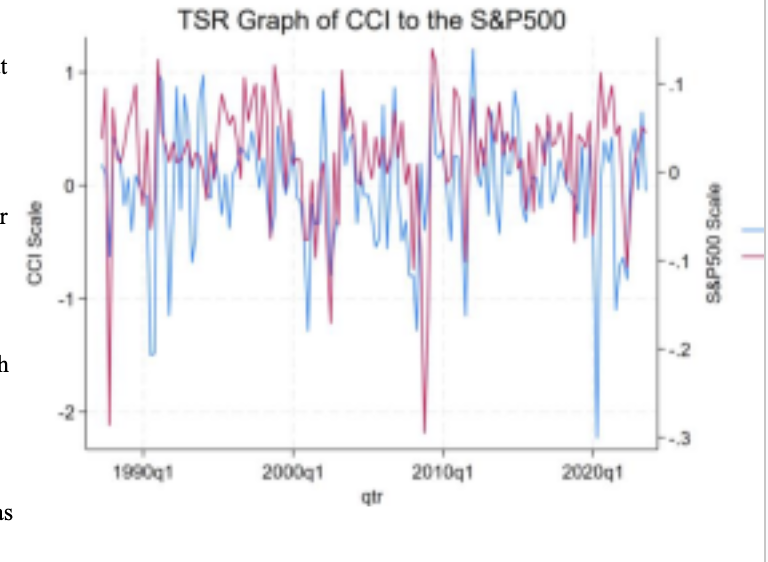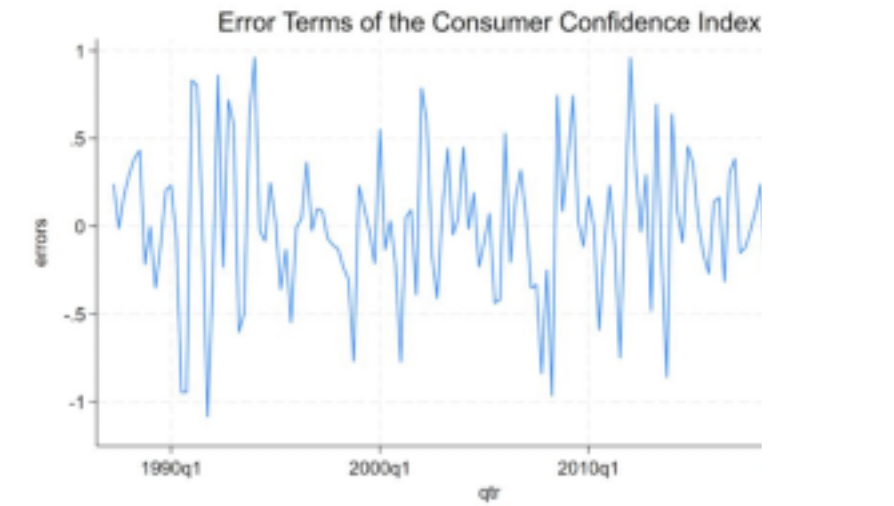Article by Armine Kardashyan’26
Despite low unemployment, an increasing labor force participation rate, and robust GDP growth
this year, US consumers are still pessimistic about the state of the economy. Is consumer
sentiment becoming disconnected from economic fundamentals or do consumers simply weigh
recent inflation more heavily than these other positive indicators? To address this question, I
conducted an analysis of the historical determinants of US consumer sentiment to determine
whether recent pessimism is different, or whether it is simply the usual reaction to an economy in
this state. In fact, this time is not different: consumers are responding to basic economic factors
like GDP growth and inflation much as they have in past decades.
Gloominess about the economy’s prospects has continued for a third month straight amid
persistent worries about inflation, higher borrowing costs, and the world political environment.
Given that consumer spending constitutes about two-thirds of the US economy, it is important to
understand the state of consumer psychology as an indicator of aggregate demand. If consumers
are pessimistic about the state of the economy, they will tend to cut back on spending and save
more which in turn can lead to a slowdown in economic activity.
Policymakers and economists measure confidence by surveying households to gather their
evaluation of the health of the economy. The Conference Board’s survey consists of five
questions— two measuring household evaluations of current conditions and three measuring
household expectations for the next 12 months. They combine the answers into a single number
called the Consumer Confidence Index. Using quarterly data from 1987 to 2023, I ran a time
series regression to find out how the Consumer Confidence Index varies with changes to GDP
growth, inflation, housing prices, and stock prices.
Figure 1: Time Series Regression Graph of Consumer Confidence Index to S&P500 Index
According to the regression analysis, consumers respond to GDP growth, inflation rates, and
stock prices, but not housing prices. Stock prices were found to have the greatest effect on
consumer confidence. The next greatest determinant of consumer confidence was inflation
followed by the GDP growth rate. Perhaps this is in order of relative salience more than the
relevance of the data to macroeconomic health. Stock prices are reported daily, while prices for
gas and groceries are also reinforced by daily observation. High inflation and a stock market that
has not yet returned to the summer 2022 peak may be sufficient to explain households’
uneasiness.
But is there perhaps something else depressing consumer sentiment: some non-economic factor?
In fact, there are a plethora of other determinants such as news or geopolitical conflicts that can
greatly impact consumer confidence.
We constantly get information about everything in the world from various legitimate or non-legitimate
sources that shape our depictions of reality. The recent coverage on the uncertainty of decisions in
the Federal Reserve can be an indicator to consumers that the economy is not stable.
Additionally, the rise of negative partisanship across news sources and political parties adds to
the political influence on confidence. This influence is further substantiated by the fact that
another determinant of confidence is whether the respondent supports the party in the White
House. The increasing pessimism, hence, might suggest an increasing dissatisfaction with the
Biden Administration.
Lastly, international tensions and conflicts also play a role in affecting US confidence. Given the
tense political climates throughout Europe, and recent conflict in the Middle East, consumers
might anticipate America’s involvement to negatively impact the US economy.
Figure 2: Error Graph of Consumer Confidence Index
To address the initial question posed, we can look at the difference between actual consumer
sentiment and the consumer sentiment that can be explained by our four economic factors. This
“residual” is the part of consumer sentiment that must be attributed to other factors. While the
most recent value is negative, it is quite small, suggesting that current consumer sentiment is in
line with current economic conditions. Moreover, while values were strongly negative at some
points during the pandemic—understandable given the potential economic impacts of the
crisis—there is little evidence that these non-economic factors are more important now than in
the past.
Despite the Biden administration’s factual trumpeting of historically low unemployment and
robust economic growth, consumer sentiment is, as it always has been, more focused on inflation
and the stock market. Which is why consumers remain less than fully optimistic about the
economy.
Article by Armine Kardashyan’26
Economic Journalist
Lowe Institute of Political Economy


